The original flower from the genus of ficuses, due to the structural features of the leaves resembling a lyre, was called ficus lyre-shaped. Another representative of the Mulberry family arrived in moderate latitude from the tropical climate of Africa and immediately became the favorite of many gardeners.
Material Content:
Description, nuances of growing
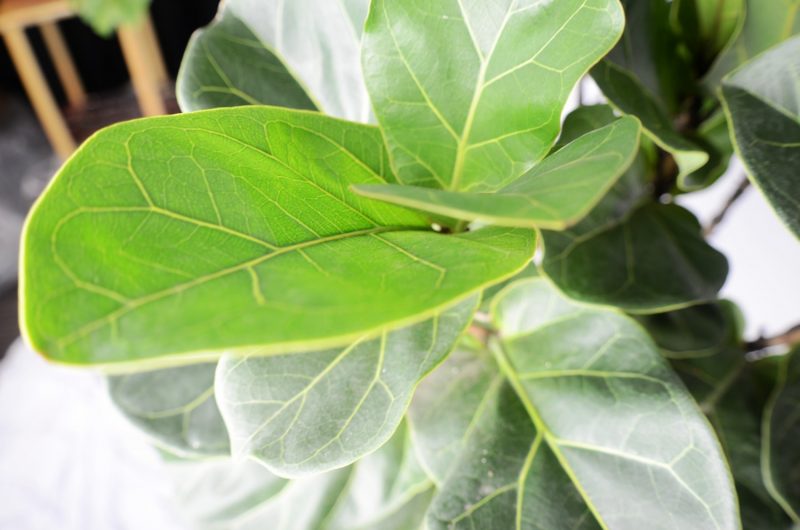
In the natural range of growth, the ficus lyre-shaped with a height of 12 m is an epiphytic plant that lives in the lower tier of tropical forests under the broad crowns of trees and often blooms. At home, the culture does not exceed 1.5 m. Green leathery leaf plates are attached to the shoot in a spiral fashion with petioles. Culture in a residential environment does not like being in a company with other representatives of the flora and pleases gardeners only with beautiful greenery, not having the ability to form buds and bloom.
Ideal conditions for keeping ficus
An undemanding plant, ideal for landscaping spaces for various purposes, but in order to maintain high decorative qualities, it needs to create optimal conditions.

- Lighting and location. So that the plant does not suffer from direct sunlight in the summer, when the sun is too active, it is recommended to place a pot with it on the windowsills of the eastern and western directions. The length of daylight for an active vegetation of ficus is 8 hours; therefore, when it is reduced and there is no additional illumination, the culture has a stagnation stage.
- Soil requirements.To the composition of the soil, ficus lyre-shaped is undemanding, but needs a loose structure and good drainage of the soil. To make a suitable soil mixture, it is enough for the grower to take turf soil, peat and sand in a ratio of 3: 1: 1.
- Temperature. Creation of comfortable conditions for the growth of ficus lyriform involves maintaining the temperature in the summer at 22 - 25 ° C, and in winter - 16 - 18 ° C.The thermophilic plant does not tolerate temperature extremes and lower the mercury stage of the thermometer below 12 ° C. This can lead to leaf disease.
- Humidity. The inhabitant of the tropics loves a high level of humidity, which is easy to provide by organizing an additional spraying of green ficus, as well as by installing a water tank next to the pot. To maintain the cleanliness and beauty of leaf blades, you should clean them from dust with a soft sponge.
Read also:gardenia jasmine
Care for lyric ficus at home
Caring for a representative of the mulberry family is very simple, and this contributes to the growth of the huge popularity of the flower in phytodesign.
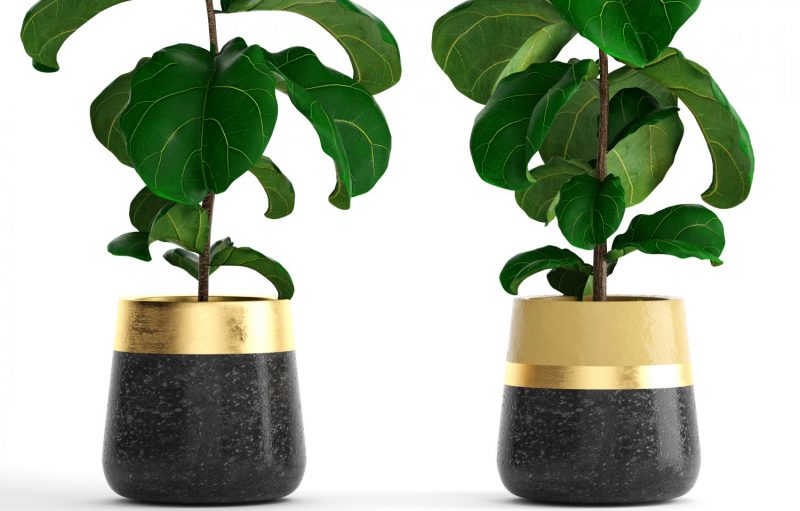
- Watering. It is necessary to monitor the condition of the earthen coma, which before each new portion of water should dry on 2 phalanges of the finger. Due to the sensitivity of the roots to chlorine, the water procedure should be carried out with standing water at room temperature.
- Fertilizing and fertilizers. If lycid ficus is provided with optimal growing conditions, then during the period of active vegetation, the flower should be fed twice a month with the help of liquid complex fertilizers for decorative and deciduous plants. In the autumn-winter period, the substrate is enriched no more than 1 time per month. Since chemical compositions adversely affect the plant, it is recommended that the application rate be reduced by half. And if agrochemicals get on the leaf plates, immediately wash them off with clean water.
Read also:clerodendrum: home care
Pruning and crown formation in plants
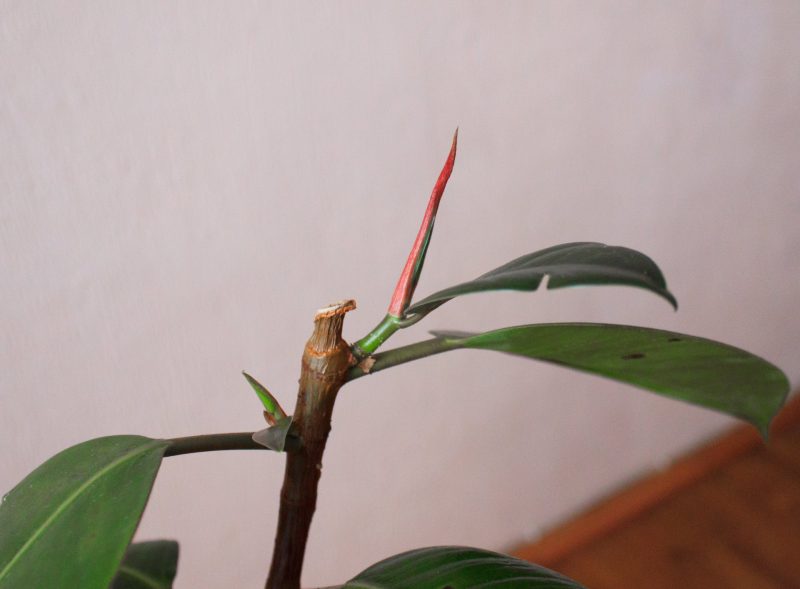
A crown is formed in the lyre-shaped ficus in a natural way. In order for the shape to be correct, it is recommended to regularly rotate the flower pot clockwise. Trimming lyre-shaped ficus is carried out in the spring in order to limit its size, while the cut is done over the internode.
Do I need a transplant after purchase
Ficus negatively refers to the frequent conduct of such a procedure, since it has a depressing effect on it. If the plant was purchased in a good pot with a fertile substrate, then the transplant should be carried out as a general rule: in early spring young specimens are transplanted annually, and adults - with an interval of 4 years.
In cases where the culture was in a transport container with depleted soil, it is necessary to withstand the green "pet" in a 30-day quarantine and transplanted into a suitable pot.
The main stages of the procedure:
- The flowerpot is selected with a larger diameter.
- A drainage layer of broken brick or gravel is distributed at its bottom.
- Next, a flower with an untouched earthen lump passes.
- The free space around the roots is filled with prepared soil mixture.
Pest and Disease Control
Lyric ficus is distinguished by excellent immunity, which makes it a practically invulnerable culture against pests and diseases.
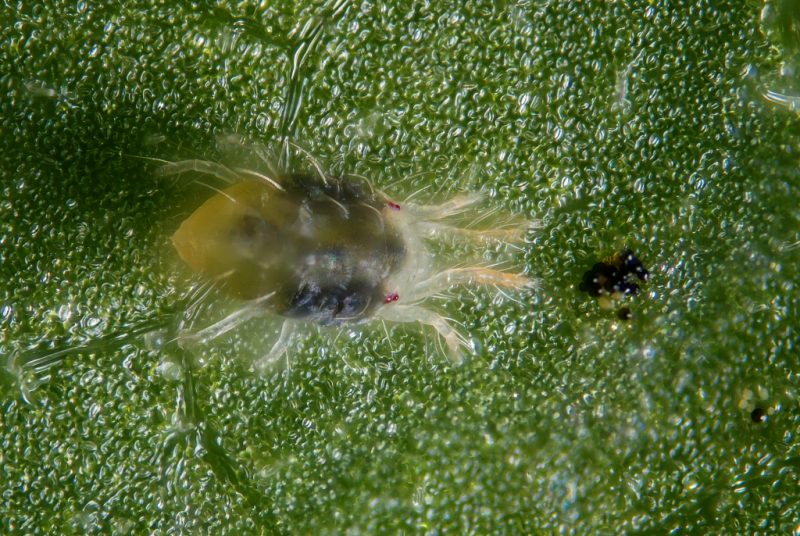
But violations of the regulations for maintenance and care lead to a deterioration in the health of the plant and to the possibility of colonizing it with a mealybug, spider mite and aphid.
To get rid of harmful insects that feed on the juice of decorative foliage, it is necessary to treat the culture with an insecticide according to the manufacturer's instructions indicated on the package.
Excessive waterlogging of the soil can cause the development of gray rot, which is treated with fungicide and preliminary transplantation of the plant into a fresh substrate.
It is interesting:adenium care
Plant propagation methods
Reproduction of lyciform ficus is carried out in the second half of spring with the help of cuttings or air layers.
In the process of cutting, the following steps are performed:
- A sharp sterile knife cuts off the apical stalk 15 cm long.
- Milk juice stops under running water.
- The cutlery is dried in air and immersed in a glass of water in which activated carbon is diluted to prevent pathogens from developing.
- When roots form on the stalk, it is planted in a nutrient substrate in an individual pot.
Performing the procedure of propagating ficus by air layers, follow this algorithm:
- Choose a green or semi-lignified shoot that exposes 10 cm.
- Under the internode, an incision is made in a circle, which is washed with filtered water, treated with a growth stimulator and wrapped with moistened moss.
- To fix the sphagnum, tape or tape is used.
- When the roots are formed, the layers are separated from the maternal specimen and planted in an individual pot.
What problems can a flower grower face?
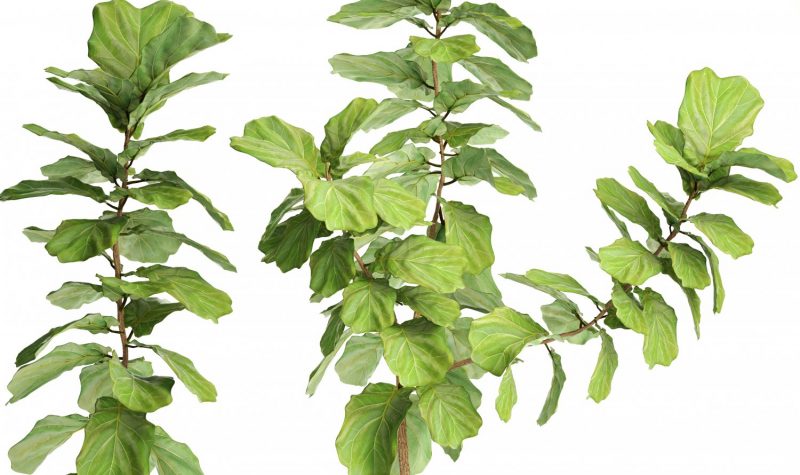
When growing lyciform ficus in gardeners, problem situations may arise:
- Yellowing and falling of leaves. Soil and air drought, as well as a lack of lighting, can lead to yellowing of the leaves and their further discharge.
- Slowed plant growth. If the flower has stopped growing, you should refresh the substrate and choose a more spacious pot.
- The appearance of brown spots. The causes of the formation of brown spots on the leaves can be direct sunlight, an excess of fertilizers or chemical solutions on the shoots.
Thus, if the florist wants to green the apartment without complicating his life with laborious and troublesome care, then the ficus lyre-shaped with excellent decorative qualities will be an ideal option.















